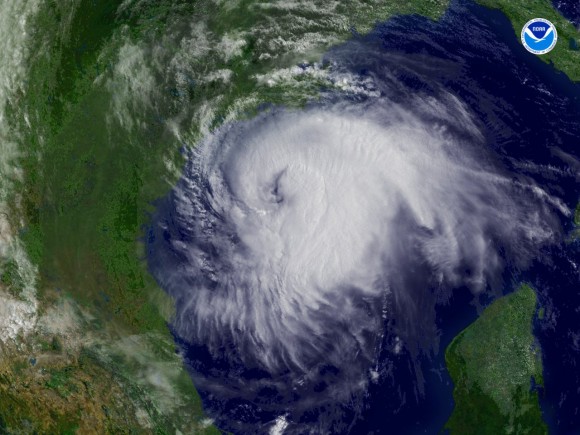Low catastrophe activity and claims experience so far this year have helped to put Texas’ insurer of last resort for properties along the Gulf Coast in a better position to face the 2014 hurricane season than it has been in years.
Additionally, the Texas Windstorm Insurance Association is finally winding down claims associated with Hurricanes Ike and Dolly, which, combined with litigation resulting from those claims, wiped out the association’s reserves and left it in a precarious financial position.
As of March 31, 2014, the estimated ultimate loss and loss adjustment expense for Ike is $2.64 billion and $315 million for Dolly, according to a report presented to the association’s board at its May 21 meeting. With more than $100 million in reserves dedicated to the remaining outstanding lawsuits from the two 2008 hurricanes, TWIA Chief Actuary Jim Murphy said staff believes the association is adequately reserved for closing claims from those events.
TWIA had about $483.4 million in cash and investments at the end of March 2014. Exposure and policy growth remained nearly flat, with exposure increasing by 1.67 percent, largely due to an increase in policy limits. Funds in the Catastrophe Reserve Trust Fund totaled around $210 million at the end of the first quarter. That amount is projected to rise to $216 million, TWIA Controller Pete Gise told the board.
In all, TWIA anticipates it would be able to access between $3.5 billion and $3.75 billion for the current hurricane season. That funding would include TWIA’s cash on hand, the CRTF, $900 million in traditional reinsurance and $400 million from a catastrophe bond, the issuance of $1.5 billion in class 2 and class 3 bonds, if needed, and the possible issue of pre-event class 1 bonds – a proposal that is currently being evaluated by the Texas Department of Insurance.
TWIA General Manager John Polak told the board that this is the first year the association has reinsurance in the form of aggregate cover.
With a series of smaller storms being more likely than a single large storm, Polak said having aggregate cover rather than an occurrence form makes a significant difference when it comes to funding availability.
“The reinsurance attachment point is eaten up by these [smaller] storms, so we have a better chance of collecting on the reinsurance if we need it,” Polak said. “On an occurrence form, you’d always have to have an event of that $1.9 billion or more.”
Depopulation
Between 2005 and 2012 TWIA’s loss exposure increased by around 319 percent — from $23.26 billion to $74.17 billion, and its policy count grew by approximately 243 percent — from 109,693 to 266,726, according to the Texas Windstorm Insurance Association Clearinghouse Feasibility Study released earlier this year.
In order to reduce its risk exposure and policy count, TWIA has been working to create a voluntary coastal wind insurance portal that would allow qualified interested parties to register and access underwriting information for TWIA insured properties to determine whether or not they want to write the business.
At the May 21 board meeting Polak said the proposed clearinghouse would be “simply a data repository – a facilitator to aggregate the data necessary for carriers to make a determination if business we are currently writing is something that they could write on a profitable basis.”
Questions remain as to how the data in the repository will be utilized and what the life cycle of the process will be from the time a participating carrier is made aware of an opportunity until the time they make an offer, if they choose to do so, Polak said.
Murphy presented the following recommendations from depopulation committee regarding the development of the clearinghouse:
- Access to the portal would be limited to members of the association. That would, in effect, include any admitted carrier in Texas and any affiliated non admitted companies.
- The existing agent of record would be maintained.
- There would be confidentiality and terms of use agreements that would need to be executed before access to the clearinghouse could be granted.
“The depopulation committee further clarified that nothing that we do as part of this process would restrict the policyholder’s ability to choose to participate in this take out and to choose the agent of their choice,” Murphy said.
The board voted unanimously in favor of a motion to authorize staff to build and make the clearinghouse available to association members, subject to the terms outlined by the clearinghouse subcommittee and depopulation committee.
Topics Catastrophe Natural Disasters Texas Reinsurance Hurricane
Was this article valuable?
Here are more articles you may enjoy.



 Cracks in O’Hare Columns Aren’t Insured Property Damage, Just Bad Product – Court
Cracks in O’Hare Columns Aren’t Insured Property Damage, Just Bad Product – Court  Berkshire’s ‘Most Important’ Biz Drives Q1 Results; GEICO Still Behind on Tech
Berkshire’s ‘Most Important’ Biz Drives Q1 Results; GEICO Still Behind on Tech  Liberty Mutual Posts $1.5B Net Income for Q1, Reversing Loss
Liberty Mutual Posts $1.5B Net Income for Q1, Reversing Loss  Update: Fannie Mae Guidelines Raise Concerns, Could Bar ACV Coverage for Homes
Update: Fannie Mae Guidelines Raise Concerns, Could Bar ACV Coverage for Homes 


